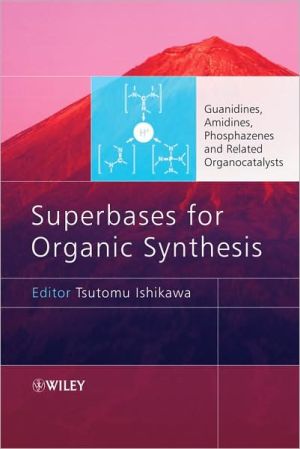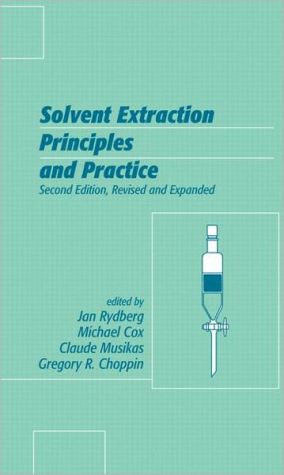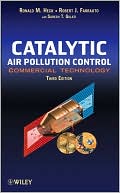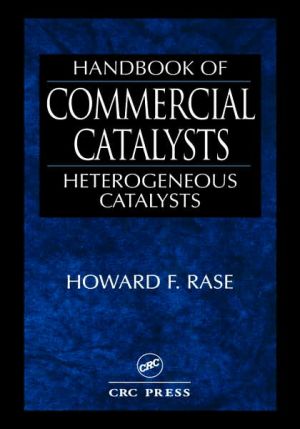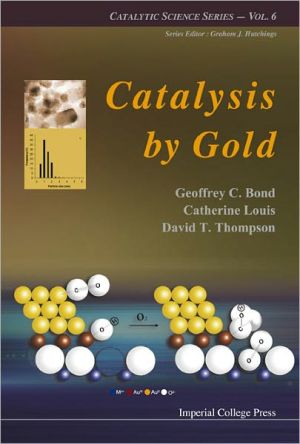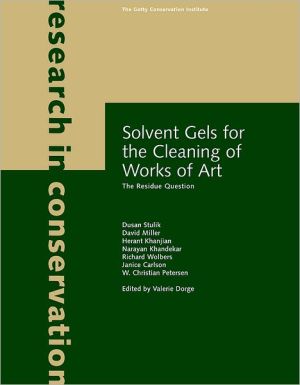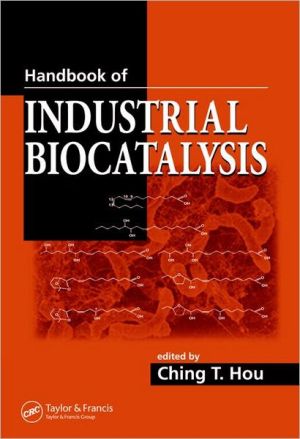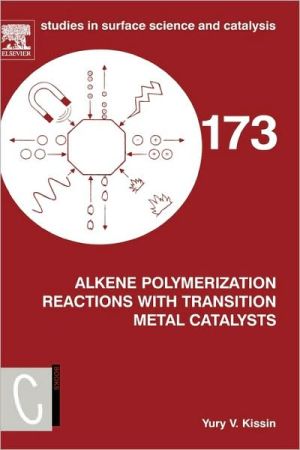Superbases for Organic Synthesis: Guanidines, Amidines, Phosphazenes and Related Organocatalysts
Guanidines, amidines and phosphazenes have been attracting attention in organic synthesis due to their potential functionality resulting from their extremely strong basicity. They are also promising catalysts because of their potential for easy molecular modification, possible recyclability, and reduced or zero toxicity. Importantly, these molecules can be derived as natural products – valuable as scientists move towards “sustainable chemistry”, where reagents and catalysts are derived from...
Search in google:
Guanidines, amidines and phosphazenes have been attracting attention in organic synthesis due to their potential functionality resulting from their extremely strong basicity. They are also promising catalysts because of their potential for easy molecular modification, possible recyclability, and reduced or zero toxicity. Importantly, these molecules can be derived as natural products – valuable as scientists move towards “sustainable chemistry”, where reagents and catalysts are derived from biomaterial sources. Superbases for Organic Synthesis is an essential guide to these important molecules for preparative organic synthesis. Topics covered include the following aspects:an introduction to organosuperbasesphysicochemical properties of organic superbasesamidines and guanidines in organic synthesisphosphazene: preparation, reaction and catalytic rolepolymer-supported organosuperbasesapplication of organosuperbases to total synthesisrelated organocatalysts: proton sponges and urea derivativesamidines and guanidines in natural products and medicines Superbases for Organic Synthesis is a comprehensive, authoritative and up-to-date guide to these important reagents for organic chemists, drug discovery researchers and those interested in the chemistry of natural products.
Preface xiiiAcknowledgements xvContributors xvii1 General Aspects of Organosuperbases Tsutomu Ishikawa 1References 62 Physico-Chemical Properties of Organosuperbases Davor Margetic 92.1 Introduction 92.2 Proton Sponges 102.2.1 'Classical' Proton Sponges 102.2.2 Proton Sponges with Other Aromatic Backbones 122.2.3 Polycyclic Proton Sponges 142.3 Amidines 202.4 Guanidines 242.5 Phosphazenes 312.6 Guanidinophosphazenes 352.7 Other Phosphorus Containing Superbases: Verkade's Proazaphosphatranes 372.8 Theoretical Methods 412.9 Concluding Remarks 41References 423 Amidines in Organic Synthesis Tsutomu Ishikawa Takuya Kumamoto 493.1 Introduction 493.2 Preparation of Amidines 523.2.1 Alkylation of Amidines 523.2.2 Condensation of 1,2-Diamine 533.2.3 Coupling of Imines (Isoamarine Synthesis) 533.2.4 Modification of Amide Derivatives 543.2.5 Multi-Component Reaction 593.2.6 Oxidative Amidination 623.2.7 Oxidative Cyclization to Bisamidine 633.2.8 Ring Opening of Aziridine 633.3 Application of Amidines to Organic Synthesis 653.3.1 Acetoxybromination 653.3.2 Aldol-Like Reaction 663.3.3 Azidation 673.3.4 Aziridination 683.3.5 Baylis-Hillman Reaction 683.3.6 Cycloaddition 683.3.7 Dehydrohalogenation 703.3.8 Deprotection 703.3.9 Deprotonation 713.3.10 Displacement Reaction 723.3.11 Horner-Wadsworth-Emmons Reaction 723.3.12 Intramolecular Cyclization 723.3.13 Isomerization 723.3.14 Metal-Mediated Reaction 743.3.15 Michael Reaction 773.3.16 Nef Reaction 783.3.17 Nucleophilic Epoxidation 793.3.18 Oxidation 803.3.19 Pudovik-phospha-Brook Rearrangement803.3.20 [1,4]-Silyl Transfer 803.3.21 Tandem Reaction 813.4 Amidinium Salts: Design and Synthesis 823.4.1 Catalyst 823.4.2 Molecular Recognition 823.4.3 Reagent Source 853.5 Concluding Remarks 86References 864 Guanidines in Organic Synthesis Tsutomu Ishikawa 934.1 Introduction 934.2 Preparation of Chiral Guanidines 944.2.1 Polysubstituted Acyclic and Monocyclic Guanidines 954.2.2 Monosubstituted Guanidines (Guanidinylation) 954.2.3 Bicyclic Guanidines 974.2.4 Preparation Based on DMC Chemistry 984.3 Guanidines as Synthetic Tools 994.3.1 Addition 994.3.2 Substitution 1124.3.3 Others 1174.4 Guanidinium Salt 1254.4.1 Guanidinium Ylide 1254.4.2 Ionic Liquid 1284.4.3 Tetramethylguanidinium Azide (TMGA) 1314.5 Concluding Remarks 136References 1365 Phosphazene: Preparation, Reaction and Catalytic Role Yoshinori Kondo 1455.1 Introduction 1455.2 Deprotonative Transformation Using Stoichiometric Phosphazenes 1505.2.1 Use of P1 Base 1515.2.2 Use of P2 Base 1565.2.3 Use of P4 Base 1595.2.4 Use of P5 Base 1645.3 Transformation Using Phosphazene Catalyst 1645.3.1 Addition of Nucleophiles to Alkyne 1645.3.2 Catalytic Activation of Silylated Nucleophiles 1655.4 Proazaphosphatrane Base (Verkade's Base) 1765.4.1 Properties of Proazaphosphatrane 1765.4.2 Synthesis Using Proazaphosphatrane 1765.5 Concluding Remarks 181References 1816 Polymer-Supported Organosuperbases Hiyoshizo Kotsuki 1876.1 Introduction 1876.2 Acylation Reactions 1886.3 Alkylation Reactions 1906.4 Heterocyclization 1986.5 Miscellaneous 2006.6 Concluding Remarks 205References 2057 Application of Organosuperbases to Total Synthesis Kazuo Nagasawa 2117.1 Introduction 2117.2 Carbon-Carbon Bond Forming Reactions 2117.2.1 Aldol Reaction 2117.2.2 Michael Reaction 2157.2.3 Pericyclic Reaction 2177.2.4 Wittig Reaction 2207.3 Deprotection 2257.4 Elimination 2257.5 Ether Synthesis 2307.6 Heteroatom Conjugate Addition 2337.7 Isomerization 2377.8 Concluding Remarks 247References 2478 Related Organocatalysts (1): A Proton Sponge Kazuo Nagasawa 2518.1 Introduction 2518.2 Alkylation and Hetero Michael Reaction 2528.2.1 Amine Synthesis by N-Alkylation 2528.2.2 Ether Synthesis by O-Alkylation 2528.3 Amide Formation 2568.4 Carbon-Carbon Bond Forming Reaction 2598.4.1 Alkylation and Nitro Aldol Reaction 2598.4.2 Pericyclic Reaction 2618.5 Palladium Catalyzed Reaction 2648.6 Concluding Remarks 268References 2689 Related Organocatalysts (2): Urea Derivatives Waka Nakanishi 2739.1 Introduction 2739.2 Bisphenol as an Organoacid Catalyst 2749.2.1 Role of Phenol as Hydrogen Donor 2749.2.2 Bisphenol Catalysed Reaction 2769.3 Urea and Thiourea as Achiral Catalysts 2779.3.1 Role of Urea and Thiourea as Hydrogen Donors 2779.3.2 Urea and Thiourea Catalysed Reactions 2789.4 Urea and Thiourea as Chiral Catalysts 2829.4.1 Monothiourea Catalysts 2849.4.2 Bisthiourea Catalysts 2899.4.3 Urea-Sulfinimide Hybrid Catalyst 2909.5 Concluding Remarks 291References 29210 Amidines and Guanidines in Natural Products and Medicines Takuya Kumamoto 29510.1 Introduction 29510.2 Natural Amidine Derivatives 29510.2.1 Natural Amidines from Microorganisms and Fungi 29610.2.2 Natural Amidines from Marine Invertebrates 29810.2.3 Natural Amidines from Higher Plants 29910.3 Natural Guanidine Derivatives 29910.3.1 Natural Guanidines from Microorganisms 30010.3.2 Natural Guanidines from Marine Invertebrates 30110.3.3 Natural Guanidines from Higher Plant 30210.4 Medicinal Amidine and Guanidine Derivatives 30310.4.1 Biguanides 30510.4.2 Cimetidine 30510.4.3 Imipenem 30610.4.4 NOS Inhibitors 30710.4.5 Pentamidine 307References 30811 Perspectives Tsutomu Ishikawa Davor Margetic 315References 319Index 321
